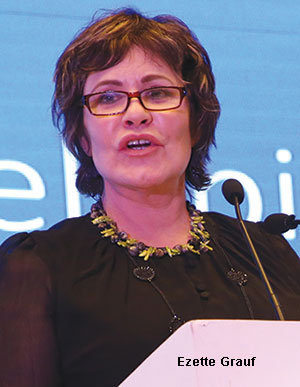 To develop children’s literacy, it is important to encourage deep reading from early childhood. A competitive case study of two young children is revealing. One is very familiar with tech devices, using phones and iPads often. The other is experienced in the print medium, having been read to and having interacted with books regularly.
To develop children’s literacy, it is important to encourage deep reading from early childhood. A competitive case study of two young children is revealing. One is very familiar with tech devices, using phones and iPads often. The other is experienced in the print medium, having been read to and having interacted with books regularly.
Is one necessarily better than the other? Does the type of reading that children do really matter? Yes it does.
According to latest research in brain circuitry development conducted by Maryanne Wolf, director of the Center for Dyslexia, Diverse Learners and Social Justice at the UCLA Graduate School of Education and Information Studies, USA, a problem is caused in the brain when children are almost exclusively engaged in digital media reading. Reflection, analogical understanding, critical thinking and empathy are developed by deep reading of conventional print media. Whereas digital reading, especially if introduced in early childhood, encourages skimming and discourages reflective interaction with text matter.
Though it has been well-known for sometime that early childhood education results in improved life outcomes, we weren’t previously as clear about the significance of deep reading on children’s brain development. But new research confirms that reading in the first 2,000 days by children of ages 1-5, builds brain circuitry for processing what is read, more meaningfully.
Reading is a meaning making activity, beyond mere word recognition capability. Meaning is developed by connections made in the brain — connections between imagination, language, cognition, motor skills and emotions. By the time a child is five years old, it is important to have built complex connections in her brain through deep reading.
Early years educators need to encourage the reading habit in children to develop the complex circuitry of their brains to enable them to acquire knowledge and to understand themselves, the world around them and develop ideas of their own. Deep reading is very different to just reading words on a page. It is about interacting with, and responding to text matter.
It is important that teachers and parents don’t use iPads as pacifiers or babysitters unless absolutely necessary, as they ultimately truncate reading brain circuitry. Also don’t focus solely on phonics which prompts children to learn the relationship between alphabets and the sounds of spoken language in isolation. It is therefore inadvisable to begin phonics programmes before age three; instead it is better to balance phonics with other aspects of reading development.
To build the best brain circuitry for children up to age three, teachers and parents should read to them, discuss and debate what is being read, responding to queries and connecting emotions and sentiments in stories and text so that language, ideas and emotions are stored together firmly in their long-term memory.
Another strategy for building brain circuitry as children learn to read, is to encourage them to write or draw by hand, which will enable them to explore their own thoughts at the slow pace of their relatively embryonic writing and drawing abilities. This also helps to develop their cognitive patience.
Nevertheless, phonics teaching isn’t all bad, in fact it is highly necessary. I’m just saying that phonics is a bit of a show pony, as a highly visible skill for children to demonstrate. It works well for skill development but if phonics is your reading programme, then you need to do a great deal more to build brain circuitry.
I’m also not saying all tech devices and software are bad, but they can be show ponies too. There is nothing more inspiring than seeing a young child doing something that you yourself struggle with. In the process of learning to code, children develop deduction and analysis skills and learn the importance of sequence, something almost missing from so-called learning to read apps.
Therefore, the goal of early years educators should be to develop bi-literate brains by reading and teaching through print media in the first phase of life and subsequently introducing quality digital experiences that require thoughtful and personal interaction.
To build a strong literacy and learning foundation for young children, it is important to fight back against the neglect of deep reading. Before they attain the age of three, saturate children with recited stories, books and conversations. After three, add the technical aspects of letter and sound recognition but balance this with deep reading for brain circuitry development. Read to, read with, connect and enjoy the experience.
As Maryanne Wolf writes, “ultimately a strongly formed reading circuit is the most powerful tool we have… In the long run, it is children building and relying on, and ultimately trusting their own intelligence and utilising the capacities they have to resist and judge what they read wisely.”
In conclusion, I strongly recommend that all of you read Wolf’s extraordinary work — Reader Come Home: The Reading Brain in a Digital World (2018). It will inform your thinking and alert you to what we need to do to best prepare young children for success in the 21st century.
(Ezette Grauf is head of teaching and learning at Heritage Xperiential Learning School, Gurgaon)

























